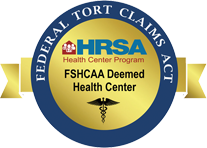Constipation is a common problem in children. Every child has different bowel movement patterns. Most children have one or two bowel movements a day, but some can go two or three days before having a normal bowel movement. Constipation can be painful and cause discomfort, but it is usually temporary. It most commonly occurs when waste or stool moves too slowly through the digestive track, causing the stool to become hard and dry. The three stages when kids are most likely to experience constipation are in infants when the switch from formula to solid food occurs, in toddlers when toilet training first begins, and in older children around the time school starts.
Symptoms of constipation can include: less than three bowel movements a week; stomach pain; bowel movements that are hard, dry, and difficult to pass; pain while having a bowel movement; traces of pasty or liquid stool in the child’s underwear; and blood on the surface of hard stool. Constipation is usually not serious but can lead to complications At times, it can be a sign of an underlying condition. If constipation lasts longer than two weeks or is accompanied by fever, not eating, blood in the stool, abdominal swelling, weight loss, pain during bowel movements, or part of the intestine coming out of the anus; you need to take your child to your healthcare provider. Complications may include anal fissures (painful breaks in the skin around the anus), rectal prolapse (the rectum comes out of the anus), stool withholding, and impacted stool which collects in the rectum and leaks out (encopresis).
Constipation is more likely to affect kids who are sedentary, don’t eat enough fiber, don’t drink enough fluids, take certain medications (like antidepressants), have a medical condition affecting the rectum or anus, have a metabolic or digestive system problem, or have a neurological disorder. There are several things that can contribute to constipation in kids. Withholding occurs when a child ignores the urge to have a bowel movement because they don’t want to take a break from playing. This is especially common in the era of video gaming but can also occur when a child does not want to use the restroom at school, waiting instead until they get home. Also, if it if it hurts to have a bowel movement, they will avoid it, and sometimes, it’s because they are afraid of the toilet or the flushing sound a toilet makes.
Toilet training issues can occur if a child is not ready to be toilet trained and a voluntary decision by the child to ignore the urge to use the bathroom becomes an involuntary habit that is hard to change. Changes in a child’s diet, such as not enough fiber-rich fruits and vegetables or fluid can also lead to constipation. Changes in a child’s routine (such as travel) can also affect bowel function. A cow’s milk allergy can sometimes lead to constipation. Children with family members who have experienced constipation are also more likely to develop constipation.
Things that can be done at home to prevent constipation in kids are to offer more fiber rich foods, promote physical activity, create a toilet routine, remind the child to heed nature’s call, be supportive in potty training and ease up if necessary, review medications, give some prune juice, and to make sure the child is not eating too much fast food or junk food. (There is typically hardly any fiber in these types of food and they are high in fat – a combination that is conducive to becoming constipated.) Also, you might encourage more fluids. Drinking more fluids will not typically cure constipation, but it might make the stool softer and thus easier or less painful to pass.
Treatments your healthcare provider might recommend are a fiber supplement (Metamucil or Citrucel), a stool softener (Colace), a laxative (MiraLAX, Glycolax), or an enema. Children need to drink at least thirty-two ounces of fluid daily when taking fiber or a stool softener. An alternative approach that might help relieve constipation is a gentle massage of the abdomen to help relax the muscles that support the bladder and intestines.
Candice Hutchins is an RN at the Health West Pediatrics clinic. She has been a nurse for seventeen years with most of her experience in Postpartum and well-baby nursery.

Movement is key to health







